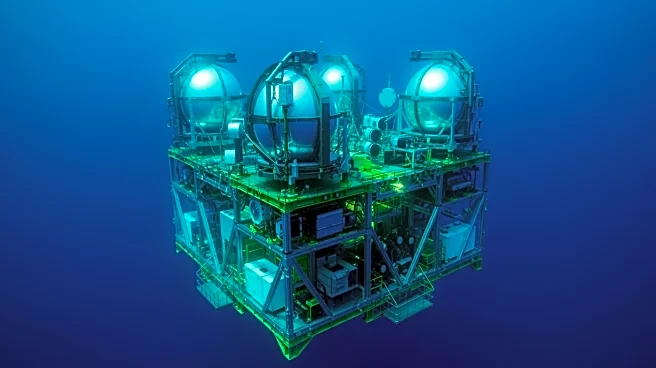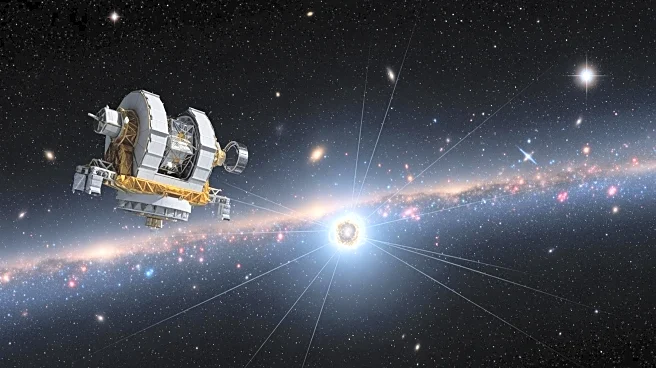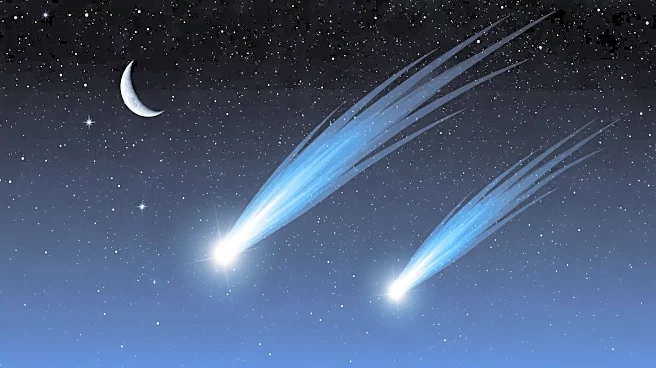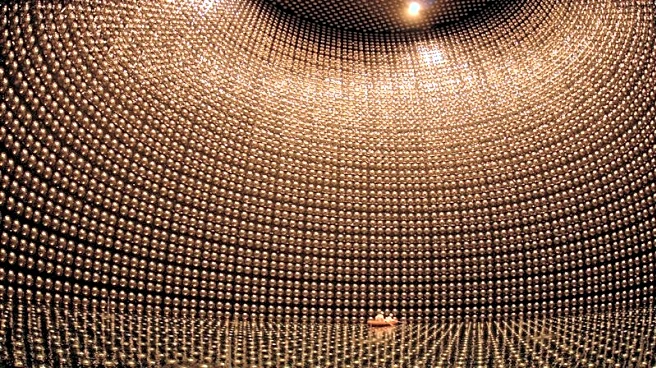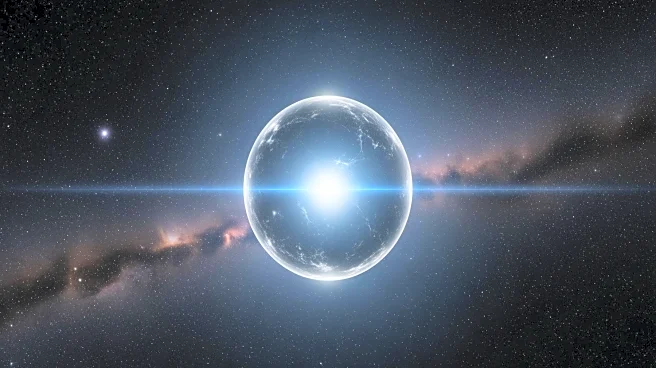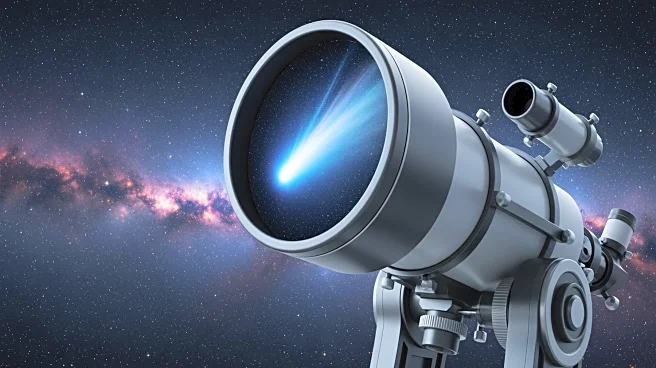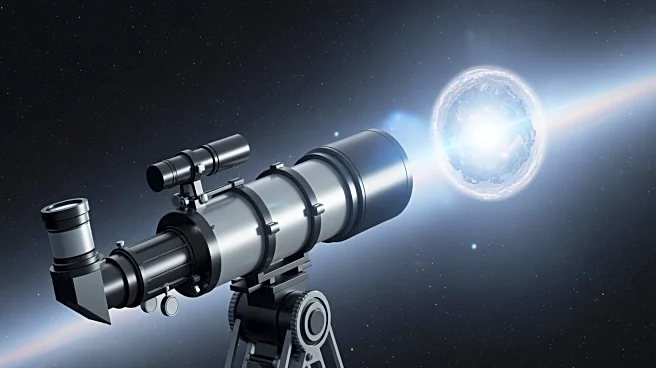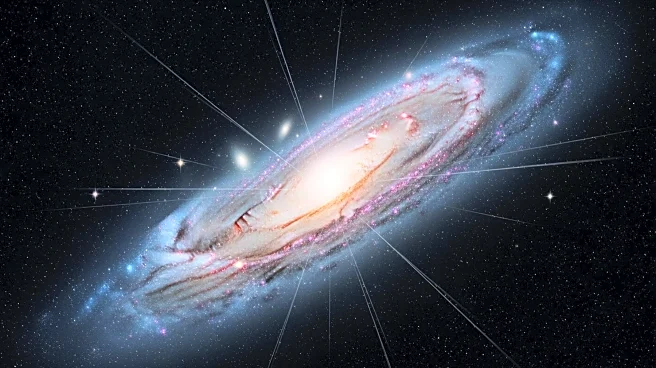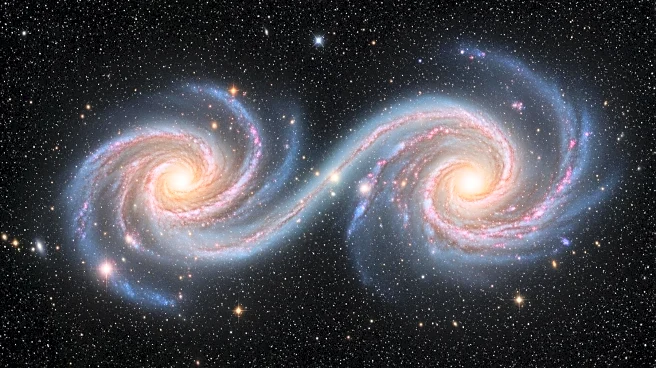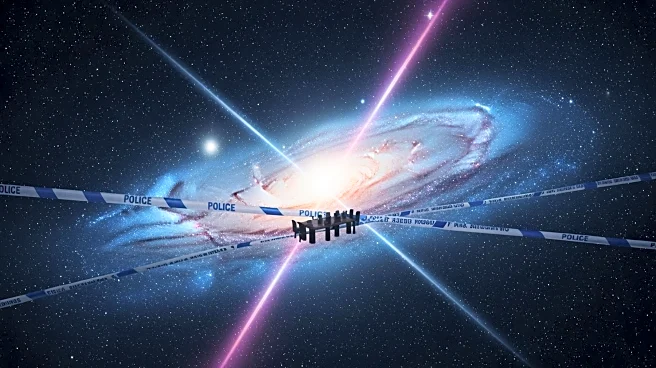What's Happening?
The KM3NeT telescope network in the Mediterranean Sea has detected the most energetic cosmic neutrino ever recorded, with an energy level of 120 petaelectronvolts. This discovery was made during the telescope's construction phase, with only 10% of its
sensors operational. The detection challenges existing theories about cosmic particle acceleration and opens new avenues for understanding extreme astrophysical phenomena. The KM3NeT observatory uses the Mediterranean's clear waters to detect neutrinos, which are electrically neutral particles that can travel vast distances through space.
Why It's Important?
This detection marks a significant milestone in neutrino astronomy, providing insights into the most violent processes in the universe, such as those involving supermassive black holes or gamma-ray bursts. The findings could lead to a better understanding of cosmic acceleration mechanisms and the origins of high-energy particles. The Mediterranean's unique environment offers advantages over traditional ice-based detectors, potentially leading to more precise measurements and new discoveries in cosmic research.
What's Next?
The expansion of the KM3NeT detector network is expected to enhance detection capabilities and measurement precision. This development complements other cosmic research initiatives and may lead to coordinated studies with optical telescopes and gravitational wave detectors, offering a comprehensive understanding of the universe's most energetic phenomena.
